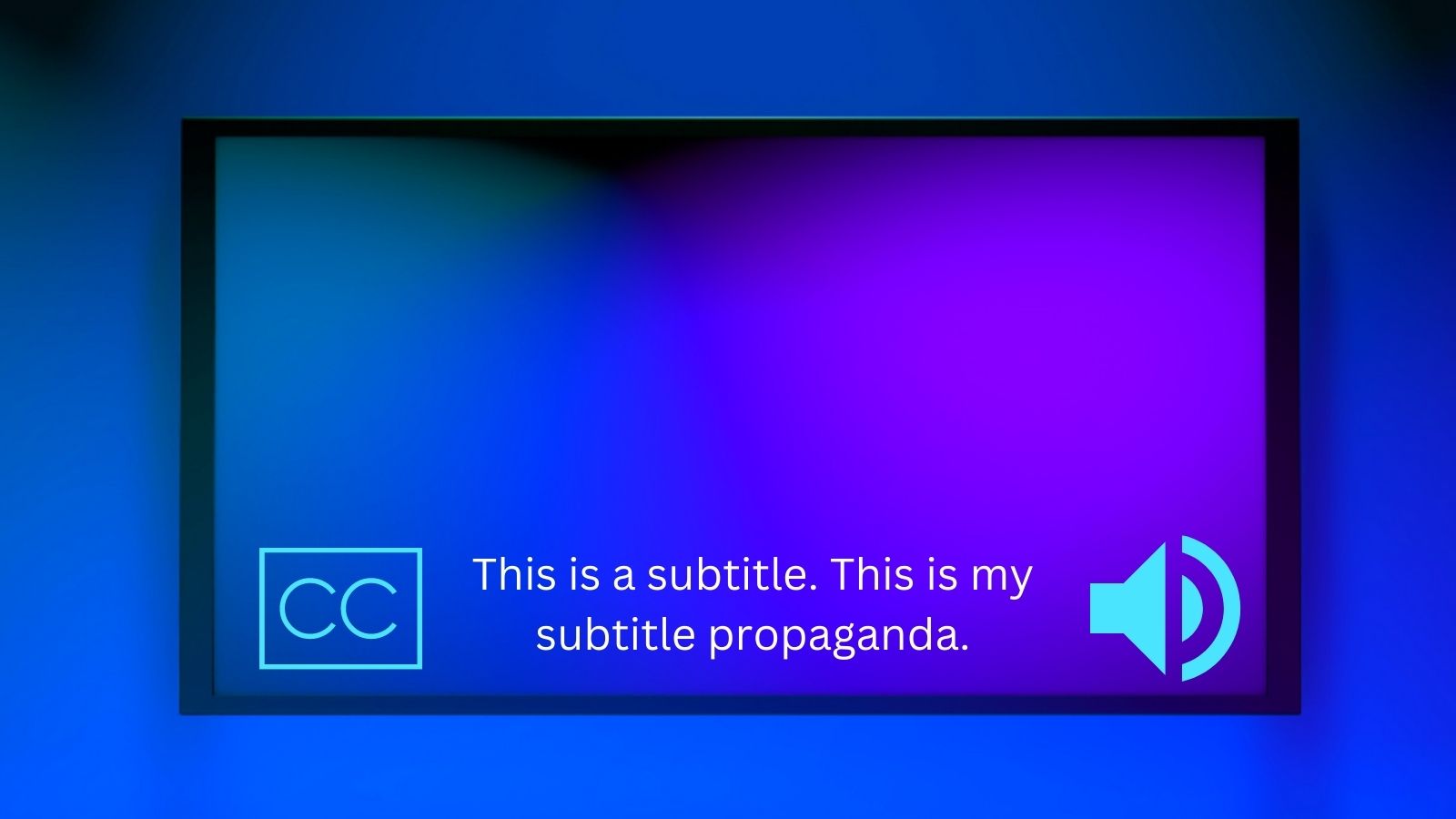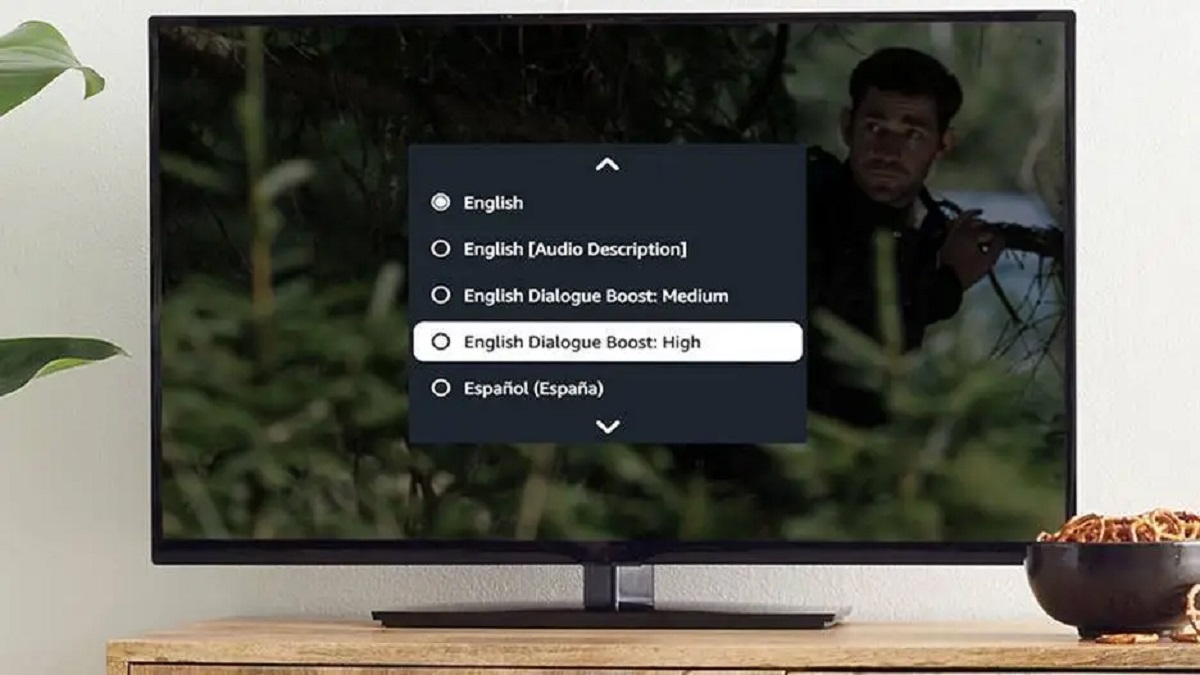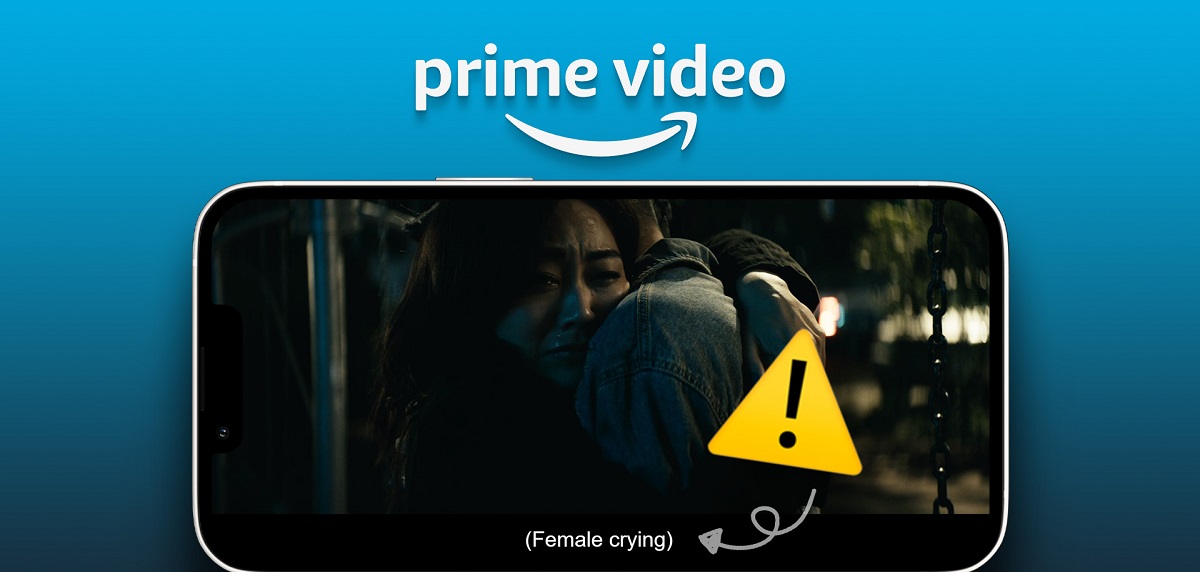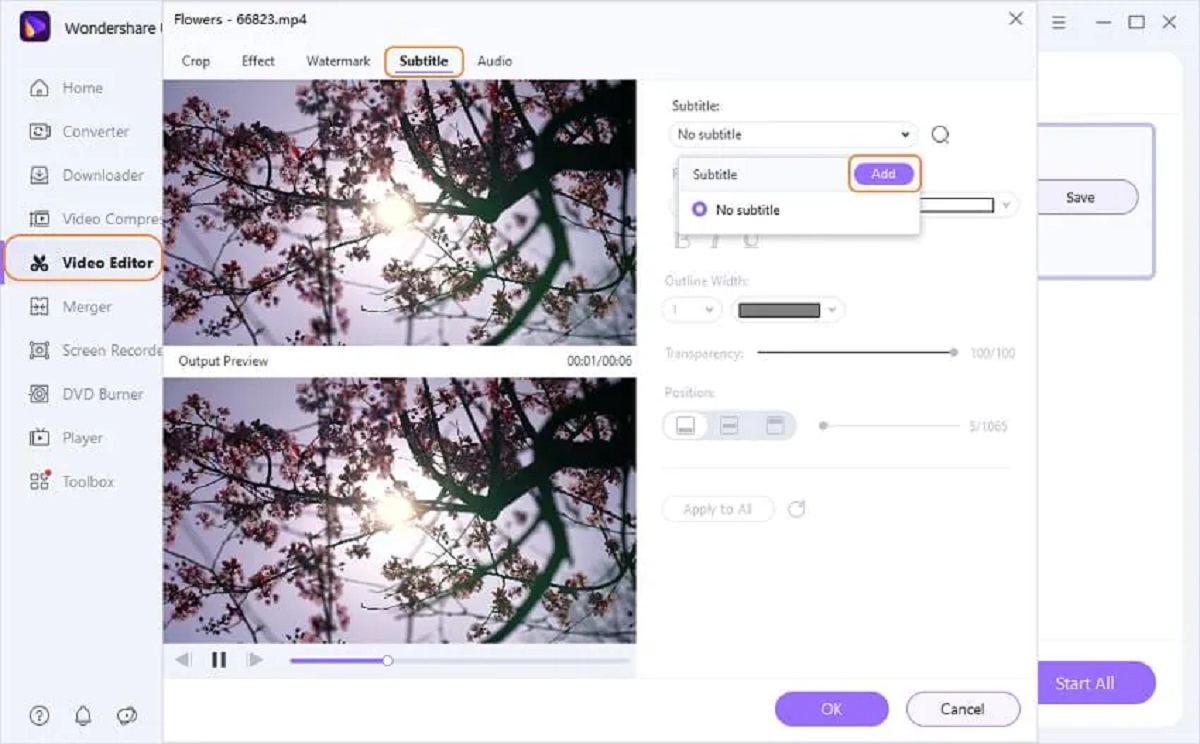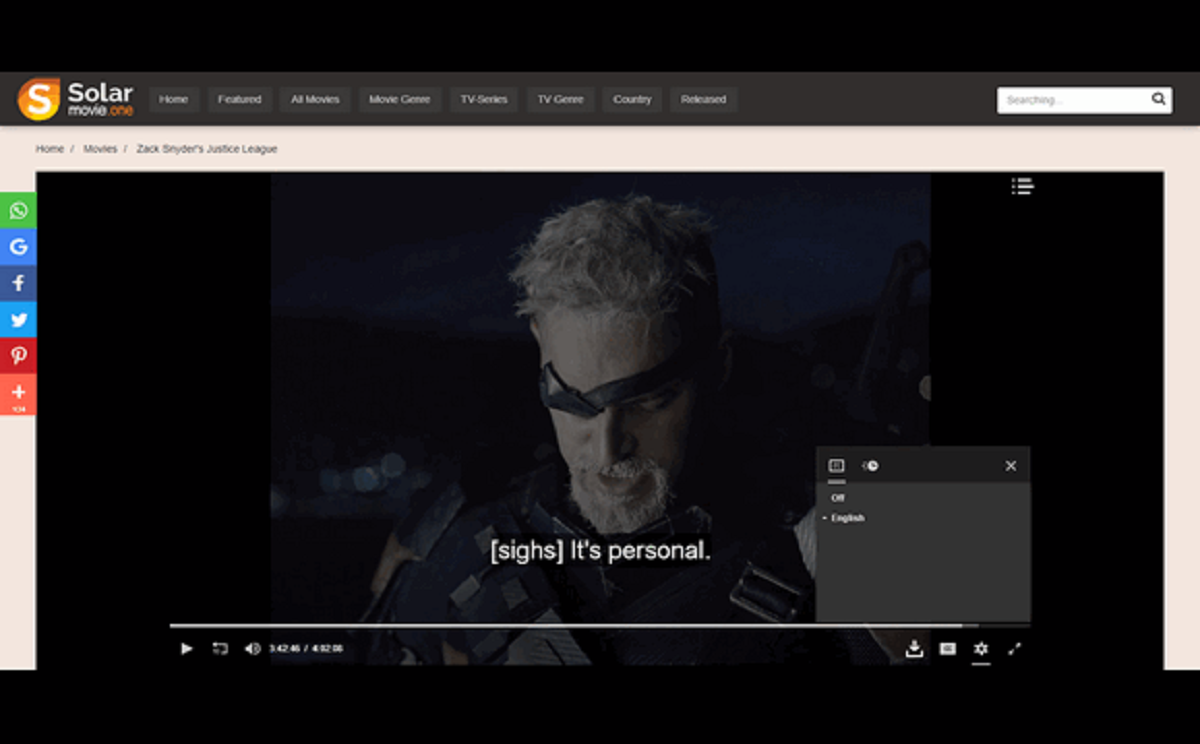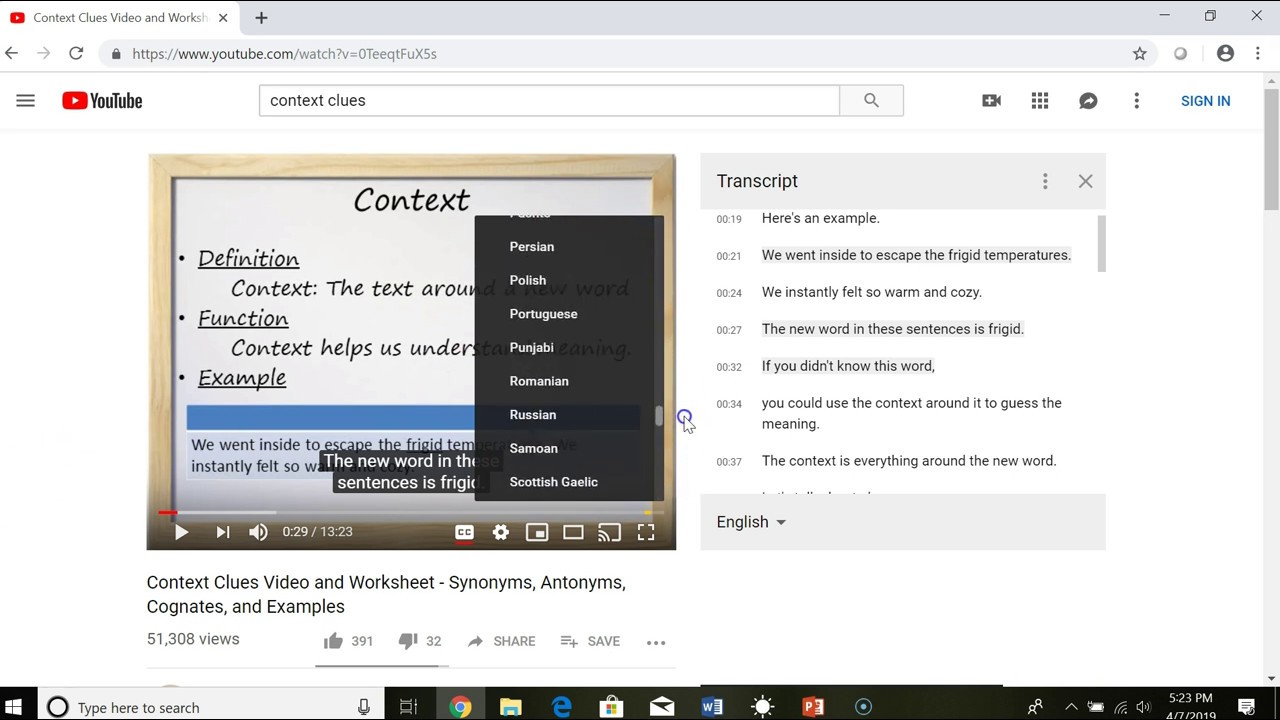Introduction
In today’s digital age, where online content is consumed at an unprecedented rate, the importance of subtitles cannot be overstated. Subtitles are text displayed at the bottom of a video or audio content that provide a written transcription of the dialogue or narration. While they may seem like a minor feature, they offer numerous benefits that enhance the overall user experience.
Subtitles play a vital role in making content accessible to individuals who are deaf or hard of hearing. By providing a synchronized text representation of the spoken words, subtitles allow these individuals to fully engage with videos and audio content. This inclusion enables a larger audience to enjoy and comprehend the material, fostering a more inclusive and diverse online community. Additionally, subtitles serve as an essential tool for non-native speakers, helping them grasp the content more effectively.
Beyond accessibility and language challenges, subtitles significantly improve comprehension. Research has shown that individuals who consume content with subtitles tend to have better understanding and retention of the material. The combination of both visual and auditory cues strengthens information processing, which can be especially beneficial for complex topics or fast-paced content. Subtitles provide clarity, eliminate ambiguity, and ensure that viewers capture every important nuance.
Moreover, subtitles cater to the needs of individuals with different preferences and learning styles. Some people prefer reading along with audio, as it helps them focus and concentrate better. Subtitles aid in eliminating distractions and enhancing concentration, especially in noisy environments or situations where audio playback may not be feasible. With subtitles, viewers can follow along with the text, avoiding missed details or confusing dialogue.
In a globalized world, where content crosses cultural and linguistic boundaries, subtitles facilitate adaptation and localization. They allow for the translation of content into various languages, enabling international audiences to access and understand it. This opens up opportunities for creators to extend their reach and engage with a broader spectrum of viewers. Additionally, subtitles can be utilized in a culturally sensitive manner, ensuring accurate representation and fostering cross-cultural understanding.
From an SEO standpoint, subtitles have gained significant importance. Search engines can easily crawl and index text-based subtitles, making it easier for the content to be discovered and ranked higher in search results. Including relevant keywords in the subtitles can directly impact the visibility and organic traffic of the content. This underscores the importance of providing accurate and well-optimized subtitles as part of an SEO strategy.
Another crucial aspect is the prominence of mobile and social media platforms, where video content dominates the online landscape. Subtitles are essential for capturing the attention of users who scroll through feeds without audio or prefer silent autoplay. They make the content more engaging and shareable, allowing viewers to consume the material even in situations where audio playback is not convenient or possible.
In summary, subtitles serve as a powerful tool that enhances accessibility, comprehension, engagement, and reach of video and audio content. By using subtitles, creators can cater to a wider audience, ensure content is inclusive and language-friendly, improve SEO ranking, and attain higher engagement on mobile and social media platforms. Recognizing the value and impact of subtitles is crucial for delivering a seamless and enjoyable user experience in the digital realm.
Accessibility for the Deaf and Hard of Hearing
One of the primary reasons why subtitles are important is their role in making content accessible to individuals who are deaf or hard of hearing. By providing a written transcription of the audio, subtitles enable these individuals to fully engage with videos and audio content.
Deaf and hard of hearing individuals rely on visual cues to understand information, and subtitles allow them to have equal access to content that would otherwise be inaccessible. The synchronized display of text alongside the video or audio content ensures that they can comprehend and enjoy the material in its entirety.
Without subtitles, individuals who are deaf or hard of hearing would miss crucial parts of the dialogue or narration that may significantly impact their understanding of the content. Subtitles bridge this information gap by providing a written representation of the spoken words, ensuring that no details are lost.
Furthermore, subtitles offer an essential tool for language processing and learning for individuals who are deaf or hard of hearing. They help develop reading and language skills, as well as provide exposure to new vocabulary and idiomatic expressions. Subtitles serve as a valuable educational resource, allowing these individuals to expand their knowledge and language proficiency.
By implementing subtitles, content creators promote inclusivity and diversity, ensuring that their material is accessible to a broader audience. Everyone, regardless of their hearing ability, can enjoy and benefit from the content, fostering a more inclusive and equal online community.
Moreover, subtitles are not only beneficial for individuals who are deaf or hard of hearing. They also aid individuals with auditory processing difficulties or those who prefer reading along with the audio. Subtitles allow these individuals to better comprehend and follow the content, preventing them from missing out on important information or dialogue.
In summary, subtitles play a critical role in ensuring accessibility for individuals who are deaf or hard of hearing. By providing a written transcription of the audio, subtitles bridge the information gap and allow these individuals to fully engage with the content. Subtitles also benefit others with auditory processing difficulties, making content more inclusive and accessible to a wider range of viewers.
Improved Comprehension for Non-Native Speakers
Another significant benefit of using subtitles is the improved comprehension they offer to non-native speakers of the language in which the content is presented. Subtitles provide a written translation or transcription of the dialogue, allowing non-native speakers to follow along more effectively.
Language barriers can pose challenges for individuals who are learning a new language or have limited proficiency. Subtitles offer a visual aid that complements the auditory input, helping non-native speakers grasp the meaning and context of the spoken words. By providing both audio and visual cues, subtitles enhance the overall understanding of the content.
Subtitles enable non-native speakers to catch nuances, idiomatic expressions, and colloquialisms that might be difficult to understand solely through auditory means. They help bridge the gap between the language skills of the viewers and the complexity of the dialogue, ensuring a more comprehensive comprehension of the material.
Moreover, subtitles allow non-native speakers to reinforce their language learning by associating written words with their corresponding spoken forms. This aids in building vocabulary, improving pronunciation, and deepening understanding of grammar and sentence structure.
By offering subtitles, content creators not only make their material accessible to non-native speakers but also create an inclusive environment that encourages language learning and cultural appreciation. Subtitles provide an opportunity for individuals from diverse backgrounds to engage with and understand content that may otherwise be challenging.
Furthermore, subtitles are not limited to translation alone. They can also provide additional information such as on-screen text, captions for sound effects, or descriptions of background sounds. This supplementary information complements the audiovisual experience and enhances the overall comprehension for non-native speakers.
In summary, subtitles have a significant impact on the comprehension of non-native speakers. By providing a written translation or transcription, subtitles facilitate understanding, help learners navigate language barriers, and reinforce language acquisition. With subtitles, content creators can reach a wider audience and create a more inclusive and language-friendly environment.
Enhancing Focus and Attention
Subtitles play a crucial role in enhancing the focus and attention of viewers, regardless of their hearing ability. By displaying synchronized text alongside the video or audio content, subtitles help eliminate distractions and improve overall concentration.
In today’s fast-paced digital world, individuals are often multitasking or consuming content in noisy environments. In such situations, audio playback may not be feasible or may not provide an optimal listening experience. Subtitles offer a solution by allowing viewers to read along with the content, ensuring that they do not miss any important details or dialogue.
For individuals who have difficulty maintaining sustained attention, subtitles serve as an additional point of engagement. Reading the text while simultaneously listening to the audio provides a multi-sensory experience that can improve focus and concentration levels. The combination of visual and auditory cues helps individuals stay actively engaged with the content.
Subtitles also aid in overcoming challenges posed by different accents, dialects, or speech patterns. In certain cases, viewers may find it challenging to understand the spoken words due to variations in pronunciation or unfamiliar accents. Subtitles act as a support mechanism, ensuring that viewers can comprehend the dialogue accurately.
Additionally, subtitles enable users to rewind or replay specific sections if needed. This feature allows individuals to review and reinforce their understanding of the content, enhancing overall comprehension and retention. Subtitles provide flexibility and control, empowering viewers to consume the material at their own pace.
Furthermore, subtitles can enhance the viewer’s experience during visually intricate or action-packed scenes. In these instances, where visual elements demand attention, subtitles serve as a valuable aid in understanding the dialogue without diverting focus away from the visuals.
In summary, subtitles enhance focus and attention by eliminating distractions, providing additional engagement, aiding comprehension in challenging speech situations, and offering flexibility in content consumption. Subtitles ensure that viewers can fully concentrate on the material, allowing for a more immersive and rewarding viewing experience.
Cultural and Language Adaptation
Subtitles play a crucial role in adapting content to different cultures and languages, facilitating cross-cultural understanding and enabling a global reach. By providing translations and cultural adaptations, subtitles ensure that content can be understood and appreciated by a diverse audience.
In a globalized world, content creators have the opportunity to reach viewers from various cultural backgrounds. Subtitles allow for localization by providing translations that capture the essence of the original dialogue. This ensures that the content remains culturally relevant and resonates with viewers around the world.
Translating content using subtitles also introduces viewers to different languages and cultures. It fosters a sense of curiosity and cultural appreciation, broadening the perspectives of the audience. Subtitles enable individuals to engage with content in languages they may not be familiar with, thereby promoting cross-cultural understanding and unity.
Moreover, subtitles assist in adapting colloquialisms, idiomatic expressions, and wordplay to the target language. Cultural nuances and context-specific references can be challenging to convey accurately, especially when translating content. Subtitles provide an opportunity to adapt these linguistic elements, ensuring that viewers can fully understand the intended meaning.
Furthermore, subtitles can be used to present content in multiple languages simultaneously, catering to bilingual or multilingual audiences. This allows creators to reach broader demographics and connect with individuals who prefer consuming content in their native language.
Additionally, subtitles can aid in making content more accessible to individuals with learning disabilities, cognitive impairments, or reading difficulties. The combination of visual and auditory cues enhances comprehension and reduces barriers to access. Subtitles function as an inclusive tool, ensuring that everyone can engage with content irrespective of their linguistic or cognitive abilities.
In summary, subtitles facilitate cultural and language adaptation, enabling content creators to reach a diverse global audience. Through translations and adaptations, subtitles promote cross-cultural understanding, expose viewers to different languages, and provide access to individuals with reading difficulties. Subtitles aid in ensuring that the content remains relevant, resonates with viewers, and fosters inclusivity and cultural appreciation.
Increased SEO and Web Traffic
Subtitles play a significant role in improving SEO (Search Engine Optimization) and driving higher web traffic to content. Search engines rely on text-based content to index and rank web pages, and subtitles provide a valuable source of textual information that enhances visibility in search results.
When subtitles are included in videos or audio content, search engines can crawl and index the text, making it easier for the content to be discovered by users. By including relevant keywords and phrases in the subtitles, content creators can optimize their material for search queries and improve its ranking in search engine results pages.
Subtitles also provide additional context to search engine algorithms, enabling them to understand the content more accurately and match it with relevant user queries. This increases the chances of the content appearing in search results and attracting organic traffic.
In addition, subtitles can help target specific keywords and long-tail phrases that may be difficult to incorporate naturally in the spoken dialogue. By strategically including these keywords in subtitles, content creators can optimize their content for specific search queries while maintaining a seamless viewing experience for the audience.
Furthermore, subtitles contribute to better user engagement metrics, such as increased duration of page visits and lower bounce rates. When users encounter subtitles, they are more likely to stay engaged and interact with the content for a longer duration. This extended engagement signals to search engines that the content is valuable and relevant, leading to improved SEO rankings.
Moreover, subtitles make content more accessible to users with different preferences or situations. Many users prefer to watch videos with subtitles, whether due to personal preference or limitations in their environment. By providing subtitles, content creators can attract and retain a larger audience, ultimately driving more traffic to their website or platform.
In summary, subtitles have a direct impact on SEO and web traffic. By including relevant keywords, improving content visibility in search engine results, and enhancing user engagement metrics, subtitles allow content to reach a wider audience and drive organic traffic. By leveraging the power of subtitles, content creators can optimize their material for search engines and increase its overall online visibility and discoverability.
Subtitles for Mobile and Social Media Engagement
In today’s digital landscape, where mobile and social media platforms dominate content consumption, subtitles have become essential for engaging with audiences effectively. Subtitles offer numerous benefits that enhance the viewing experience and foster greater engagement on these platforms.
One significant advantage of subtitles is their ability to capture the attention of users scrolling through feeds without audio. Many social media platforms autoplay videos without sound, and subtitles ensure that the content remains engaging and understandable even when viewed silently. They provide a visual element that grabs the viewer’s attention, enticing them to watch the video in its entirety.
Moreover, subtitles cater to mobile users who may be in situations where audio playback is not feasible or appropriate, such as public places or quiet environments. By providing subtitles, creators accommodate the needs and preferences of mobile users, enabling them to consume the content without disturbing others or compromising the quality of their experience.
Subtitles also contribute to greater social media engagement by making content more shareable and accessible. Users are more likely to share videos that have subtitles because they can be easily understood and appreciated by a wider audience. Subtitles make the content inclusive and enable viewers to share it with their networks, amplifying its reach and potential impact.
Additionally, subtitles facilitate social media engagement by aiding in content discovery. Social media platforms often use text-based search algorithms to surface relevant content to users. Subtitles enhance the discoverability of videos by offering textual information that matches user search queries, increasing the likelihood of content being found and shared.
Furthermore, subtitles can be customized to suit the visual style and branding of the content. Creators can utilize different fonts, colors, and formatting options to make subtitles visually appealing and consistent with their brand identity. This creates a cohesive and professional look, enhancing the overall aesthetic appeal of the content.
In summary, subtitles are indispensable for mobile and social media engagement. By capturing the attention of users scrolling through silent feeds, accommodating mobile viewing preferences, increasing shareability, aiding content discovery, and aligning with brand aesthetics, subtitles enhance the overall viewing experience and drive greater engagement on these platforms.
Conclusion
Subtitles have become an indispensable element in today’s digital landscape. Their importance spans across multiple aspects, including accessibility, comprehension, engagement, and reach. By incorporating subtitles into video and audio content, creators can enhance the overall user experience, cater to diverse audiences, and maximize the potential impact of their material.
Subtitles contribute to accessibility by providing individuals who are deaf or hard of hearing with full access to content. They also benefit non-native speakers, aiding their comprehension and language learning. Subtitles enhance focus and attention, ensuring that viewers can engage with the material even in distracting or noisy environments.
Moreover, subtitles facilitate cultural adaptation and language localization, promoting diversity, inclusivity, and cross-cultural understanding. They allow content creators to reach international audiences and present their material in multiple languages.
From an SEO perspective, subtitles have a significant impact on content discoverability, search rankings, and organic web traffic. They provide textual information that search engines can crawl and index, enhancing visibility and improving search engine rankings.
Subtitles also play a crucial role in mobile and social media engagement. They capture the attention of viewers scrolling through feeds without audio, make content more shareable, and accommodate the preferences of mobile users.
In conclusion, subtitles are an essential component of video and audio content. They enhance accessibility, improve comprehension, foster engagement, and increase reach. Recognizing the importance and value of subtitles is crucial for content creators who aim to deliver a seamless, inclusive, and engaging experience to a diverse audience in the digital world.







